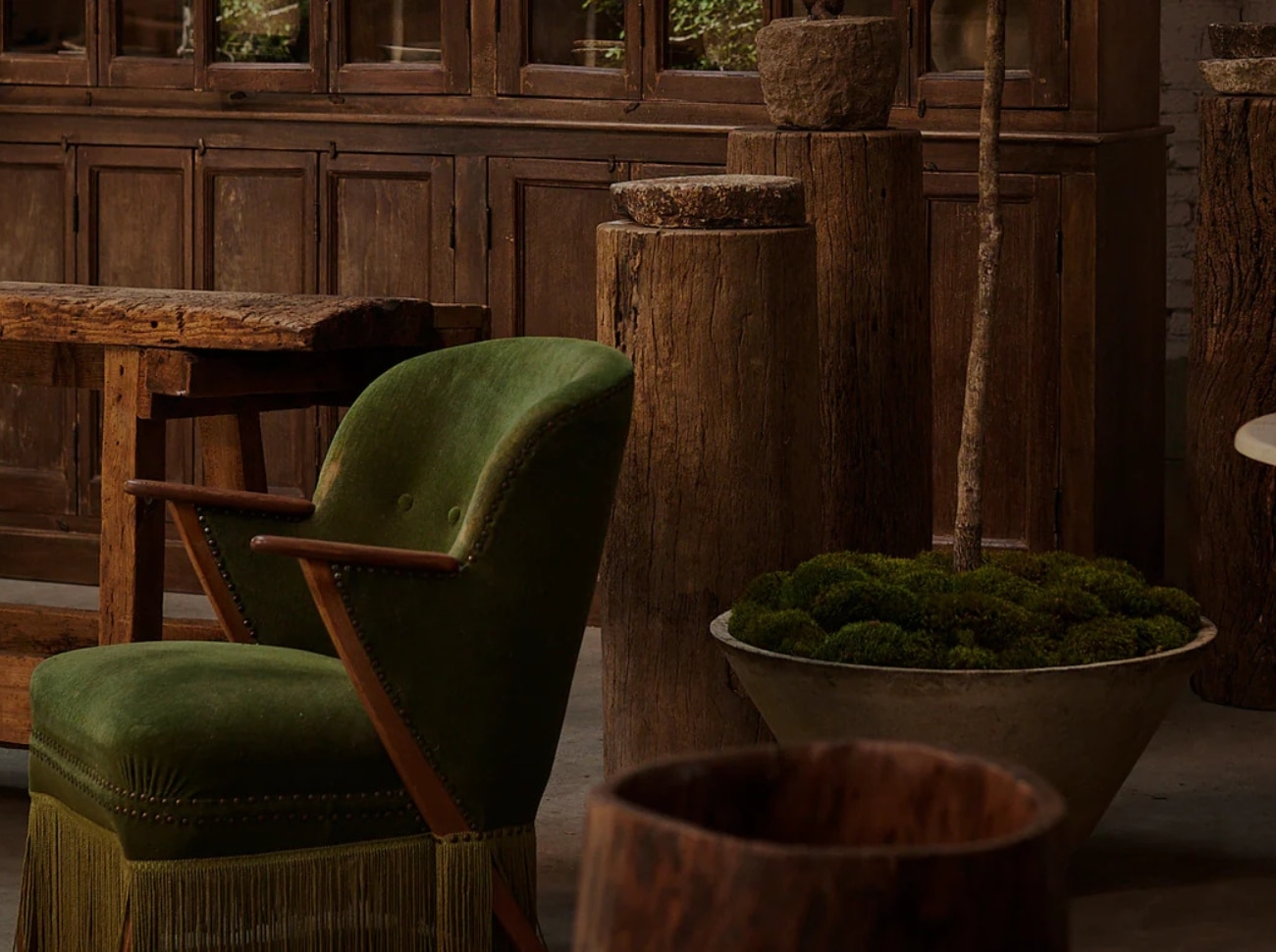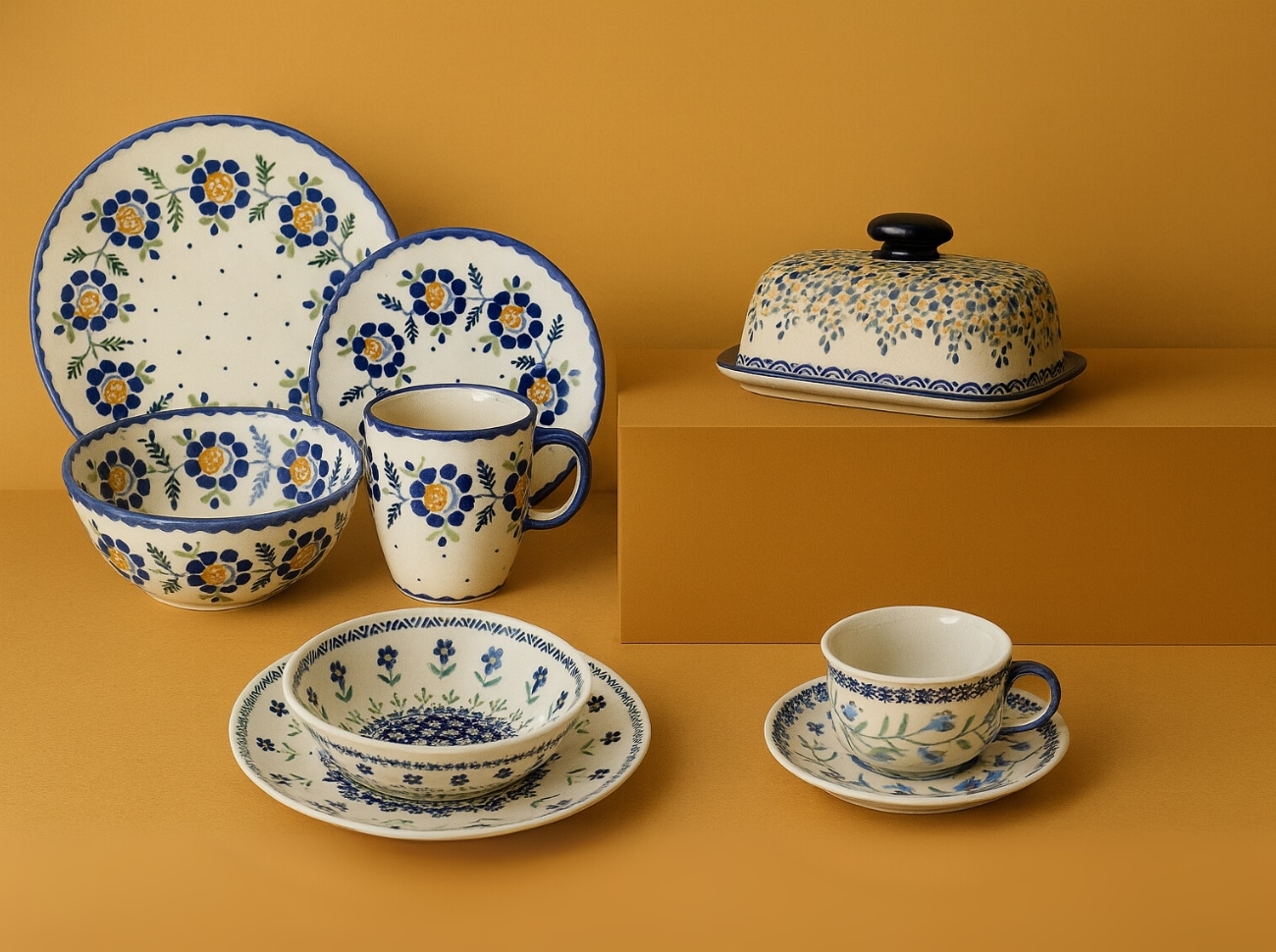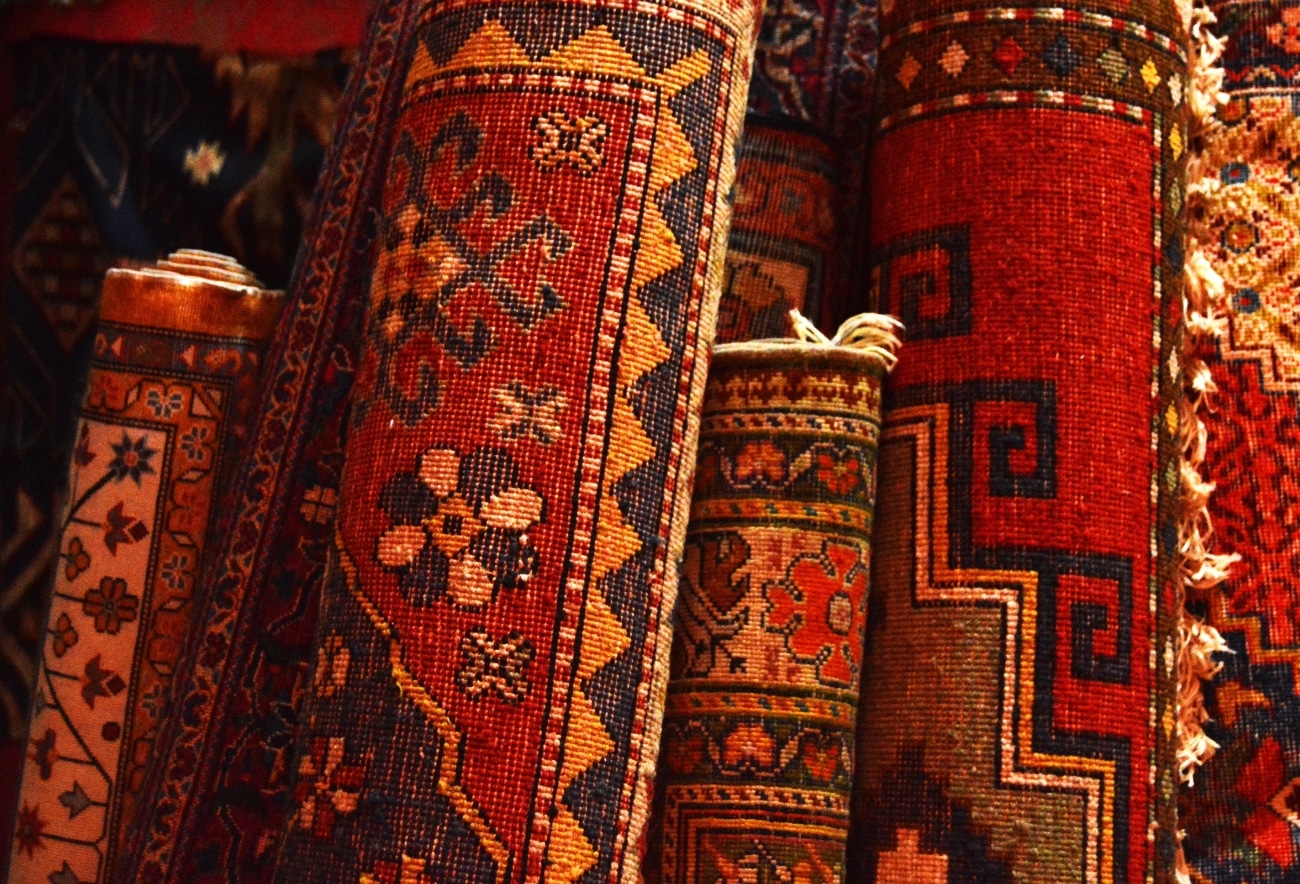
A Beginner’s Guide to Buying a Persian Carpet
This guide to buying a Persian carpet is a part of our Intentional Shopping series focused on helping our readers make more thoughtful and quality purchases.
Persian carpets are timeless pieces of art that have been around for centuries. Their intricate designs, vibrant colors, and luxurious materials make them a favorite among rug collectors and home decorators alike. Persian carpets are renowned for their quality craftsmanship and durability, making them a great investment that can be passed down through generations. The unique patterns and motifs found in Persian carpets have been inspired by the culture and history of Iran, making them an excellent way to add a touch of cultural heritage to any space. With proper care and maintenance, Persian carpets can last for decades, making them an enduring symbol of beauty and elegance.
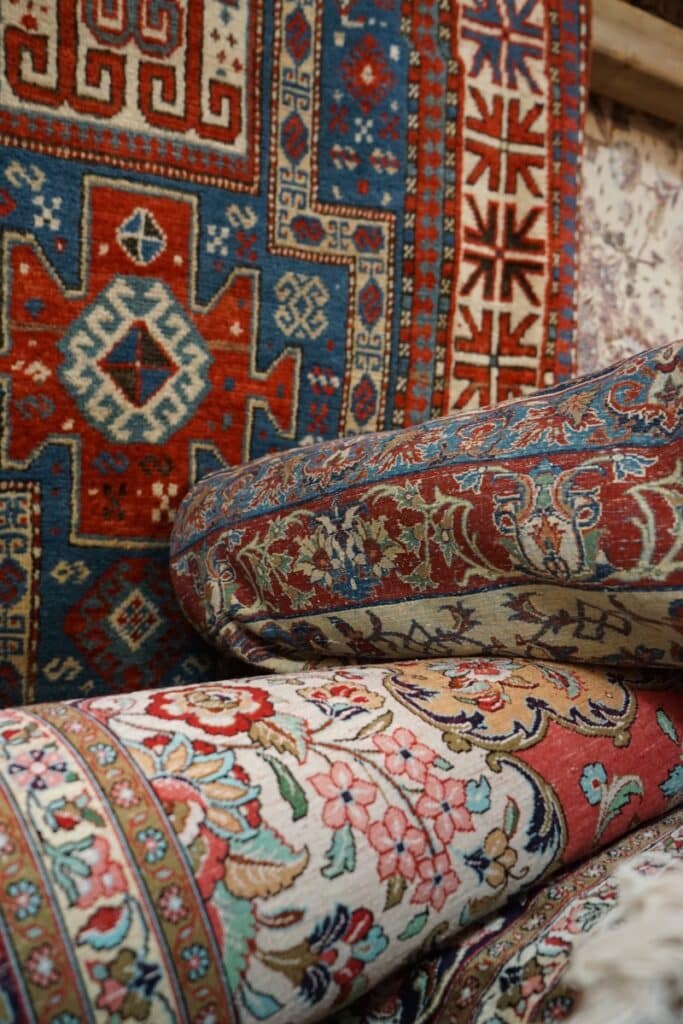
The Rich History of Persian Carpets
The history of Persian carpets dates back almost 2,500 years when Greek author Xenophon described them as precious enough to be used as currency. Persian carpets were hand-woven in Persia, which is present-day Iran. They are typically made of cotton, wool, and silk, and feature intricate patterns and designs. Persian rugs and carpets of various types were woven by nomadic tribes in village and town workshops and by royal court manufactories reflecting the history of Iran and its rich culture. The unmatched quality of Persian rugs has made them highly sought after throughout the centuries.
Today, Persian carpets remain a popular choice for home decor due to their timeless beauty and craftsmanship. They come in a variety of styles and sizes, from traditional to modern designs. Whether you’re looking for an heirloom piece or something more contemporary, there’s sure to be a Persian rug that fits your style and budget.
However, if you aren’t sure what to look for, buying a quality Persian carpet can feel like an overwhelming feat. It’s important to consider factors such as material, knot count, design, and size when narrowing down the perfect Persian carpet for your space.
To help simplify the process, here are some key factors to consider when shopping for your perfect Persian carpet.
1. Budget
Start by determining your budget. Persian carpets are an investment and can range in price significantly depending on the materials used, size, design, and quality of craftsmanship. Knowing what you’re willing to spend ahead of time will help you narrow down your options.
2. Weave Type
Persian carpets are typically made with a variety of weave types, including hand-knotted, flat-woven, and embroidered. Hand-knotted Persian carpets are the most common type of Persian carpet. They are made by knotting individual strands of wool or silk onto a cotton or woolen foundation. The knots create a dense, durable fabric that is often intricately patterned and highly detailed. Hand-knotted carpets can last for decades if properly cared for.
Flat-woven Persian carpets are also known as Kilim, Soumak, and Sumac rugs. These carpets are made without any knots. Instead, the weft threads are woven over and under the warp threads to create a flat surface with no pile. Flat-woven rugs tend to be less expensive than hand-knotted rugs but they may not be as intricate in design.
Embroidered Persian carpets, such as Suzani rugs, are created using embroidery techniques rather than weaving or knotting. Embroidered carpets feature intricate designs that are stitched into the fabric by hand using brightly colored threads and beads. These carpets tend to be more expensive than hand-knotted or flat-woven carpets but they can last for generations if properly cared for.
Pro Tip:
The best weave type in Persian carpets depends on the desired look and feel of the rug. Knotting is the most popular technique used for creating intricate patterns and designs, while flat weaving is a simpler technique that produces a more casual look.
Flat weave Persian carpets are best suited for areas with high foot traffic, as they are designed to be durable and long-lasting. These carpets are also great for hiding stains and spots due to their busy prints.
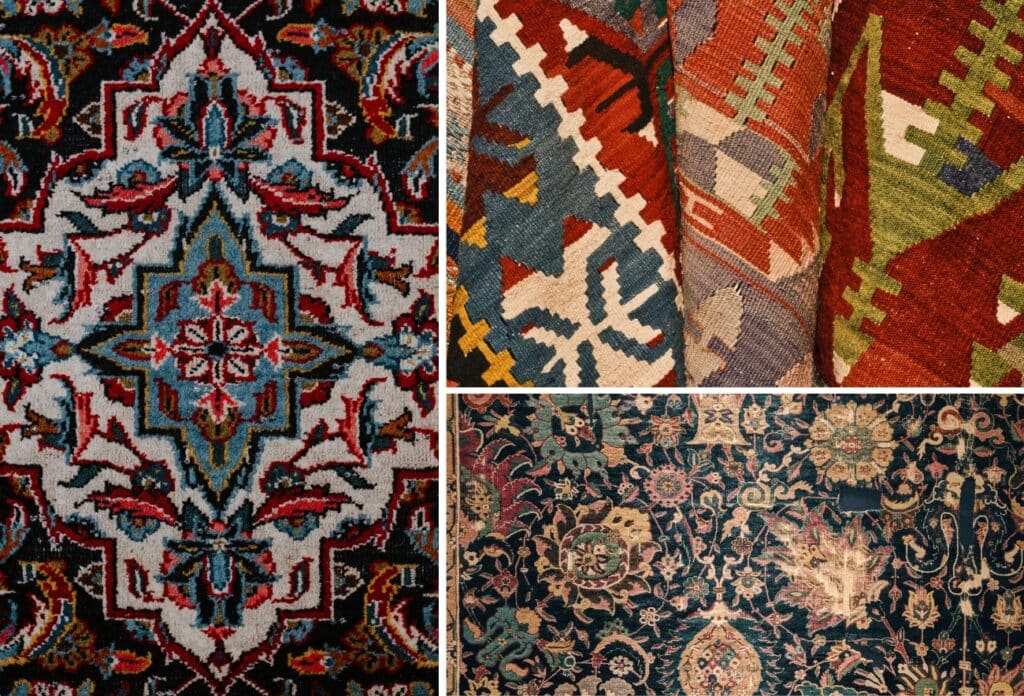
3. Knot Count
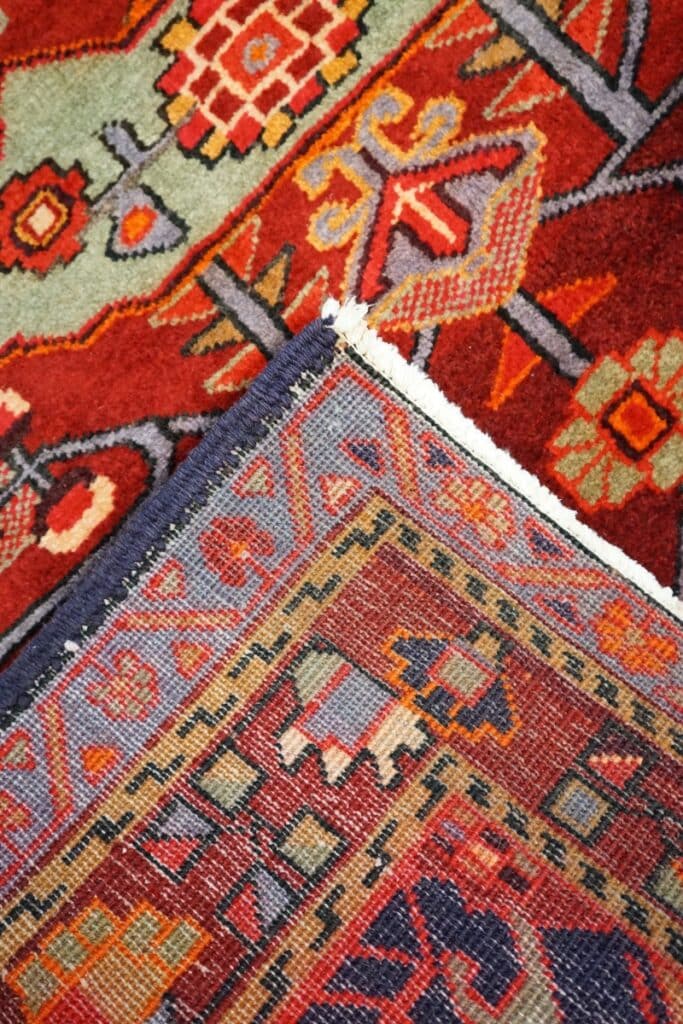
When buying a Persian carpet, knot count is an important factor to consider. Knot count is the number of knots per square inch in the carpet and it can range from 85 KPSI (coarse) to over 500 KPSI (fine). The higher the knot count, the finer and more intricate the design of the rug will be. It also affects how long-lasting and durable the rug will be. A higher knot count means that there are more knots in each square inch, making it stronger and more resistant to wear and tear.
Knot count is also an indication of quality. Rugs with a high knot count tend to be made with better materials and craftsmanship than those with a lower knot count. This makes them more expensive but also ensures that they will last longer and look better for years to come.
It’s important to remember that just because a rug has a high knot count doesn’t necessarily mean it’s good quality. You should always inspect the rug carefully before buying it, looking for signs of damage or wear and tear that could indicate poor craftsmanship or inferior materials.
Pro Tip:
If you flip the carpet over and can see the pattern on the backside, this is an indication that it is handcrafted and of higher quality.
4. Material & Quality
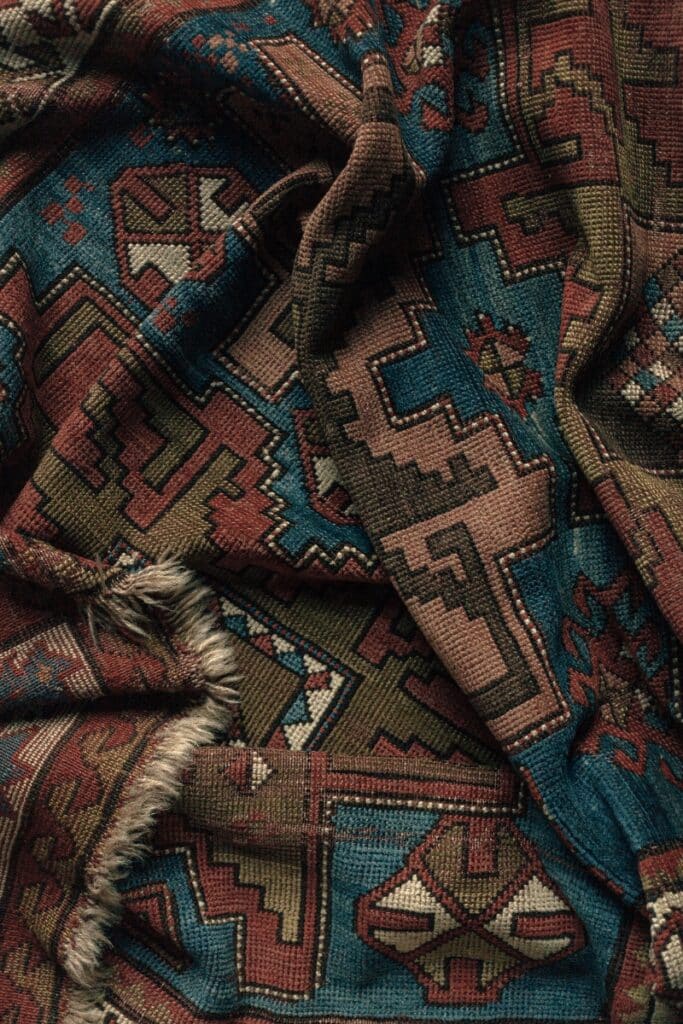
Persian carpets are typically made from cotton, wool, silk, or a combination of these materials.
The most common material used to make high-quality Persian rugs is wool, with the best wool sourced from New Zealand. This wool is extremely plush and soft in texture, giving Persian rugs their unique look and feel. Silk is often used as an accent material in Persian carpets, as it adds a subtle sheen and texture to the design.
Persian carpets are also known for their use of natural dyes, which give them a rich color palette that can last for generations.
Pro Tip:
Consider how much wear-and-tear your rug will experience—for high-traffic areas like living rooms or entryways, opt for higher-quality materials that can stand up to regular use.
5. Size & Dimension
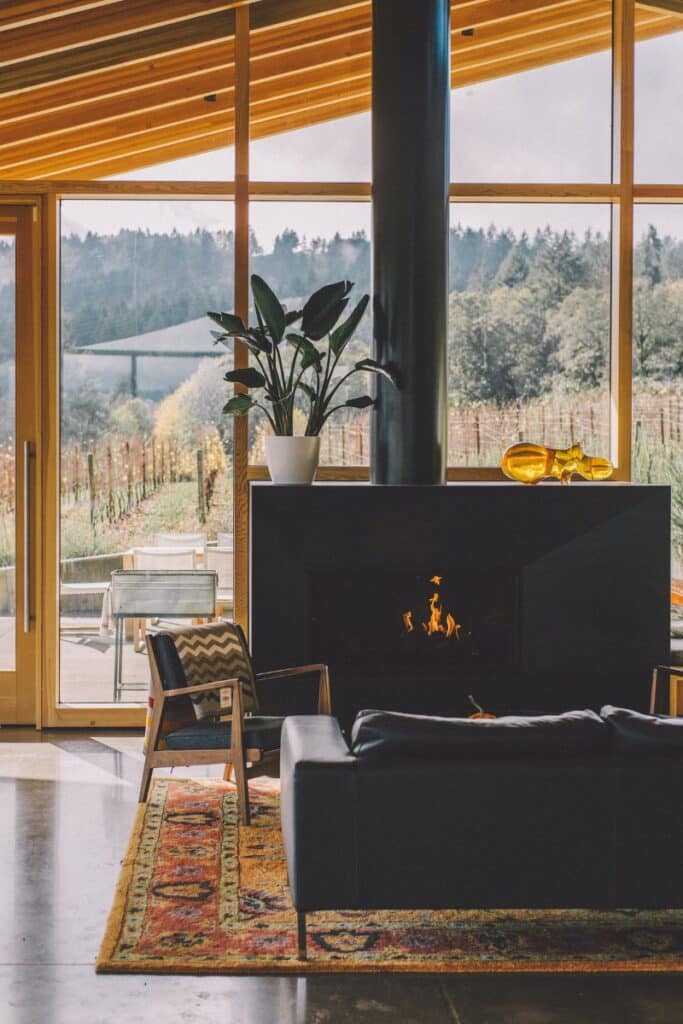
When deciding on the size of your rug, measure out the area you intend to cover before purchasing it—this will ensure you buy a rug that fits perfectly in your space without being too big or small.
When it comes to finding the right size Persian carpet for your room, there are a few key things to keep in mind. First, measure the area you want to place the carpet in and subtract two feet from both measurements. This will create a border around the carpet that will help it stand out.
Pro Tip:
Consider the furniture placement when selecting a carpet size as your carpet size should be at least as large as your living room’s seating area to ground the conversation space.
6. Design & Color Scheme
Persian carpets are renowned for their intricate patterns and vibrant colors. Traditional designs feature intricate floral patterns while more modern takes may have abstract shapes or geometric lines.
The most common patterns found in Persian carpets include Herati, Boteh, Gul, and Medallion designs. Herati is a pattern of small flowers with a rosette at the center, often surrounded by a diamond shape. This motif is also known as “fish and water” due to its resemblance to fish swimming in a pond. Boteh is an abstract design that looks like a teardrop or flame shape. It can be used alone or combined with other motifs to create complex patterns. Gul is a geometric design featuring interlocking shapes such as hexagons, diamonds, and stars. Finally, the Medallion pattern features an ornate central medallion surrounded by intricate floral designs. These iconic patterns have been used for centuries to create beautiful Persian carpets that can easily be incorporated into both classic and modern decor.
When choosing a design that suits your taste and style preferences, opt for bright colors if you’re looking to add vibrancy and life into your space or muted shades if you prefer a calmer atmosphere.
Pro Tip:
Keep in mind how much sunlight your room gets throughout different times of day as rugs with lighter colors might become dull over time due to strong sunlight while darker shades will remain more vibrant over time in strong sunlight conditions.
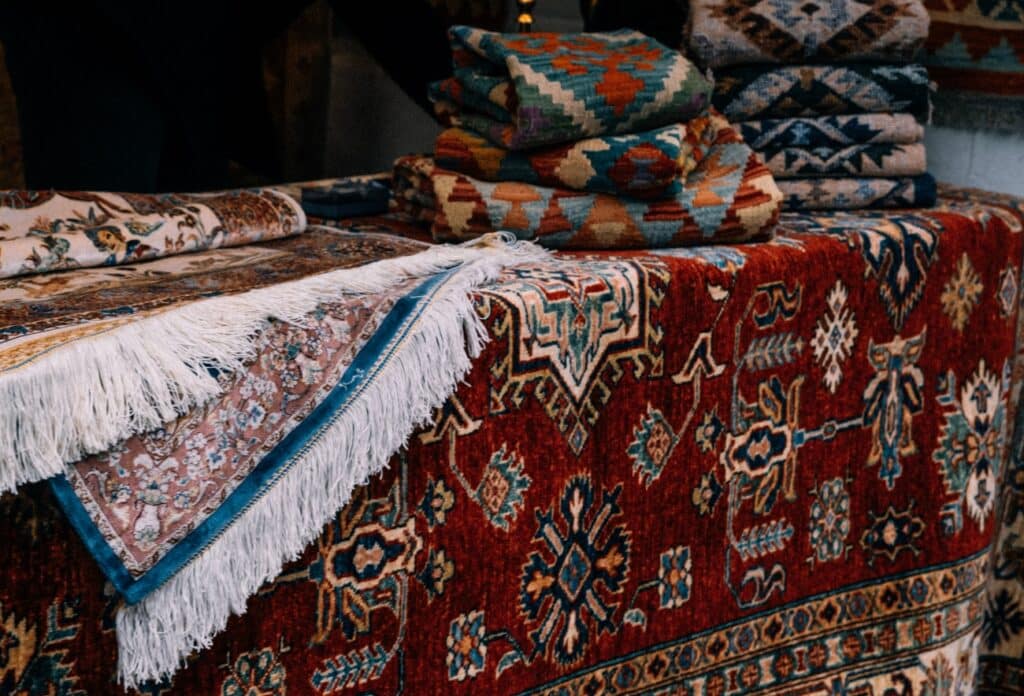
7. The Seller
When purchasing a Persian carpet, it’s important to make sure that you are buying from a reputable dealer or artisan who is knowledgeable about the product they are selling. Read reviews, and do your research to ensure that you are buying an authentic item.
Pro Tip:
As with any investment, it’s important to pay attention to the details before committing to a purchase. If you are buying a vintage Persian carpet look for signs of wear, check the edges for fraying or missing threads, and make sure that the colors are consistent throughout the carpet.
Purchasing a Persian carpet is a big investment but with careful consideration regarding material quality, size & layout preferences as well as design & color schemes–you can easily find the perfect piece for your space.




